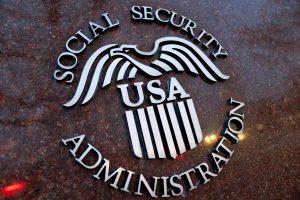September 4th ended up being a pretty dark day for shareholders of United States Steel Corporation (NYSE:X). Shares of the company declined by more than 20% at one point. This came after a report that President Joe Biden is preparing to block its purchase by Japanese steel manufacturer Nippon Steel Corporation (OTCPK:NPSCY, OTCPK:NISTF). For those like me who have been bullish on United States Steel stock, this is painful. However, for many investors, I believe that this would be looked back upon over the next year or so as an excellent buying opportunity.
Major Developments
Throughout my last two articles about United States Steel, both published this year and viewable here and here, I discussed some risks and opportunities facing investors when it comes to the company and its pending acquisition by Nippon Steel. Since then, some more news has come out, some of which has been positive, but most of which probably decreases the probability of the transaction going through.
The most recent development came on September 4th, when news began circulating that President Joe Biden was slated to block the purchase of the business. The claim is that there are national security concerns that cannot be overcome. This development alone sent shares down more than 20% at one point. However, this is not the first pushback that the transaction has received recently. On September 2nd, Vice President and Presidential candidate Kamala Harris stated that she believes that United States Steel should remain an independent company that is run domestically.
Specifically, she claimed that “US Steel is a historic American company, and it is vital for our nation to maintain strong American steel companies.” She followed up that statement with,
“And I couldn’t agree more with President Biden. US Steel should remain American-owned and American-operated. And I will always have the backs of American steel workers.”
This came only days after Governor Tim Walz, Vice President Harris’ running mate, was revealed to be open to the transaction. According to Nippon Steel’s Vice Chairman, Takahiro Mori, who is the lead negotiator for the transaction, Walz, in a meeting in June of this year, was “very positive” about the transaction between the two companies.
It is worth noting that this transaction is one of the few things that both sides of the political establishment seem to largely agree on. Last month, former President Donald Trump stated that,
“I will stop Japan from buying United States Steel. They shouldn’t be allowed to buy it. We have to make it work. We have to make it work. You don’t want to sell US Steel.”
And about two months before being picked as former President Trump’s running mate, Senator JD Vance of Ohio sent a letter, along with senators Josh Hawley and Marco Rubio, to President Biden, urging him to block this transaction. In that letter, they stated that he has the power to unilaterally scuttle the deal under the Defense Production Act, 50 U.S.C. § 4565(d), or the International Emergency Economic Powers Act, 50 U.S.C. § 1702(a).
I am not an attorney. I do not pretend to be one. But my own amateur reading of both of those sections indicates that blocking the transaction would either need to be because of some emergency or because of a major national security concern. We obviously are not in a state of emergency at this point. But one might argue that national security could be a legitimate reason to block the deal.
I do think that would be a stretch, though. In 2023, United States Steel produced 9.4 million tons of flat-rolled steel and 3 million tons of mini-mill steel. To put this in perspective, the US was responsible for 89.3 million tons of steel output. The X production is less than a 14% share of the overall market. While that is not insignificant, and it does place United States Steel as a massive player in the market, it’s difficult to argue that this would pose a significant national security problem. That is especially true when we are talking about the buyer being a Japanese company. Since the end of World War 2, Japan has been one of the United States’ biggest allies. And it has certainly been the most significant of them in the Asia Pacific region of the world.
Back in May, before I wrote my most recent article on the company, management announced that the business had received all regulatory approvals necessary outside the US to make this transaction go through. The only thing that seems to be waiting would be the US. And at the center of that is the CFIUS (Committee on Foreign Investment in the United States). I covered that in detail in that article. So it doesn’t make sense to dig in again. Having said that, it would be highly unusual for any President to shoot down a deal that receives approval from this committee. And it does look likely that United States Steel and Nippon Steel can satisfy it. According to one expert commenting on the matter in December of last year, there has never been an instance of a Japanese buyer, even during days of heightened trade tensions in the 1980s and 1990s, having a transaction blocked. They might also risk creating a rift between the US and the Japanese at a political level should things not go through if the committee states that it can. If the most recent reporting is to be believed, however, this might set an unfortunate precedent.
To further bolster its chances of the deal being approved, Nippon Steel came out with an announcement on August 28th. In that announcement, the company announced that it was making further project investments as part of its acquisition of United States Steel. At United States Steel’s Mon Valley Works, the company intends to invest at least $1 billion to upgrade that location’s hot strip mill and other facilities. It also intends to invest around $300 million to revamp Blast Furnace #14 at United States Steel’s Gary Works Facility in order to extend its operational life by up to 20 years.
On top of this, the company said that it sees ‘numerous opportunities for technology transfer to’ United States Steel following the closing of the transaction. These opportunities come from Nippon Steel’s roughly $500 million in annual research and development spending in recent years. Examples include carbon reduction technologies for a test blast furnace and certain other carbon capture and storage technologies. These updates are in addition to $1.4 billion of capital commitments that the company had previously made as part of the transaction. They also don’t seem to change the company’s commitment to honoring the contracts that it has with its unions and to keeping union employees working. Scuttling the acquisition would remove any chance of these major investments being made.
It is worth noting that news about President Biden potentially blocking the deal came out shortly after some other developments were made public on September 4th. During the day, Nippon Steel mentioned that United States Steel would remain headquartered in Pittsburgh, which is something they had mentioned previously. They claimed that it would be owned by the US subsidiary of their business and that its board would be made up primarily of US citizens. In fact, they even said that there would not be any ‘transfer’ of the company’s production capacity or jobs outside of the US. This occurred at the same time that the CEO of United States Steel, David Burritt, said that if the transaction between the two companies did not close, there would be plant closures that would result in job losses. The company may also need to move its headquarters out of Pittsburgh.
While I have no reason to doubt the statements made by Nippon Steel, I would argue that the comments made by Mr. Burritt are nothing more than standard threats. Maybe it is possible the company could move its headquarters. But it would be unlikely that there would be plant closures. As I mentioned already in this article, the firm is generating a good deal of cash flow. It has the money needed to remain competitive. And based on the development involving President Biden, it’s likely that this threat was done in the hopes of deterring such a move by the President.
Author – SEC EDGAR Data
Outside these recent updates, I do think it is important to touch on the most recent financial performance achieved by United States Steel. When I last wrote about the company, we only had data covering through the first quarter of 2024. Results now extend through the second quarter. Those who follow the steel industry know that times are a bit tough right now. So it should come as no surprise that United States Steel is struggling a bit on both its top and bottom lines. Revenue in the most recent quarter, for instance, came in at $4.12 billion. That’s down from the $5.01 billion reported one year earlier.
This was driven by sales declines across all the company’s segments. Flat-rolled steel revenue, for instance, was down roughly 11% year over year. Mini-mill steel was down 18%. The company’s European operations reported a 28% drop year over year. And tubular revenue was down 39%. This was driven by declines in both volume and prices. Naturally, this would all result in weakness in the company’s bottom line as well. The company went from generating $477 million in profits in the second quarter of 2023 to generating only $183 million worth the same time this year. Even on an adjusted basis, profitability for the company declined from $483 million to $211 million. Operating cash flow fell from $713 million to $474 million. If we adjust for changes in working capital, the drop was from $730 million to $410 million. And finally, EBITDA for the company managed to fall from $793 million to $398 million.
Author – SEC EDGAR Data
In the chart above, you can see financial results for the business covering the first half of 2024 compared to the first half of 2023. As was the case in the second quarter on its own, revenue, profits, and cash flows, all came in lower year over year. A slowdown in construction spending, not just for the US, but for other countries like China as well, it’s responsible for a major decline in steel prices. This trend will likely continue to impact companies like United States Steel for the rest of this year. It could even last throughout next year as well.
Author – SEC EDGAR Data
As disappointing as this year-over-year performance is, shares of the company are still attractively priced. In the chart above, you can see how the stock is valued. This is based on historical results for 2023 and an extrapolation based on 2024 figures so far. Even if we assume that conditions don’t revert to what they were last year and instead look like these 2024 estimates, shares are still attractively priced on an absolute basis. In the table below, and then compared United States Steel to six similar firms. On a price-to-earnings basis, it ended up being the cheapest of the group. On a price to operating cash flow basis and on an EV-to-EBITDA basis, three of the six companies were cheaper than it is.
| Company | Price/Earnings | Price/Operating Cash Flow | EV/EBITDA |
| United States Steel Corporation | 4.9 | 5.3 | 6.5 |
| Cleveland-Cliffs Inc. (CLF) | 176.0 | 3.1 | 7.3 |
| ArcelorMittal S.A. (MT) | 25.8 | 3.5 | 7.0 |
| Nucor Corporation (NUE) | 11.0 | 6.3 | 6.1 |
| Stelco Holdings Inc. (OTCPK:STZHF) | 21.0 | 10.8 | 7.2 |
| Steel Dynamics, Inc. (STLD) | 9.6 | 7.1 | 6.4 |
| Nippon Steel Corporation | 6.9 | 3.2 | 5.7 |
It’s unlikely that shares would really fall much, if at all, from where they are today if a transaction between it and Nippon Steel is blocked. Not only does the downside look limited fundamentally, but there’s also the possibility that another bidder comes into the picture to try to pick it up. Keep in mind that there were multiple bidders interested in the company. And some of these certainly would have been at prices not too far from what Nippon Steel was willing to pay. I would say that there is a decent chance that some of these could come back to the table again. But if they don’t, I still don’t see this as a bad risk to reward opportunity.
You see if United States Steel sees its multiples trade at the average of what these six companies I compared it to are trading at on a price-to-operating cash flow basis, that would imply an upside of 6.9%. If we use the same approach for the EV-to-EBITDA scenario, the increase would be a bit less at 2.9%. At present, United States Steel Corporation being bought out by Nippon Steel would imply an upside of 88.6%. When you weigh this against the downside, when you consider how hard Nippon Steel is working to make this transaction go through, and when you consider other potential bidders, this definitely looks to be a favorable risk-to-reward prospect.
Takeaway
Based on the data provided, United States Steel appears to be a very intriguing prospect for investors to consider. The company is not without its risks. This most recent development that sent shares plunging was painful. But the way I see it, this is an opportunity that offers a very favorable risk-to-reward scenario for investors. I actually took the opportunity to increase my stake in the firm by roughly 42%. That is regarding the stock only. I also placed a small bet on long-dated call options that expire in January 2026.
Ultimately, with this purchase, and excluding the call options, I am down only 5.7% on my shares as of this rating. That’s not too bad. But given the upside potential that I see from here relative to any additional downside potential, I think it would be a mistake for me not to keep the company rated a “strong buy.”
Editor’s Note: This article discusses one or more securities that do not trade on a major U.S. exchange. Please be aware of the risks associated with these stocks.
Read the full article here












